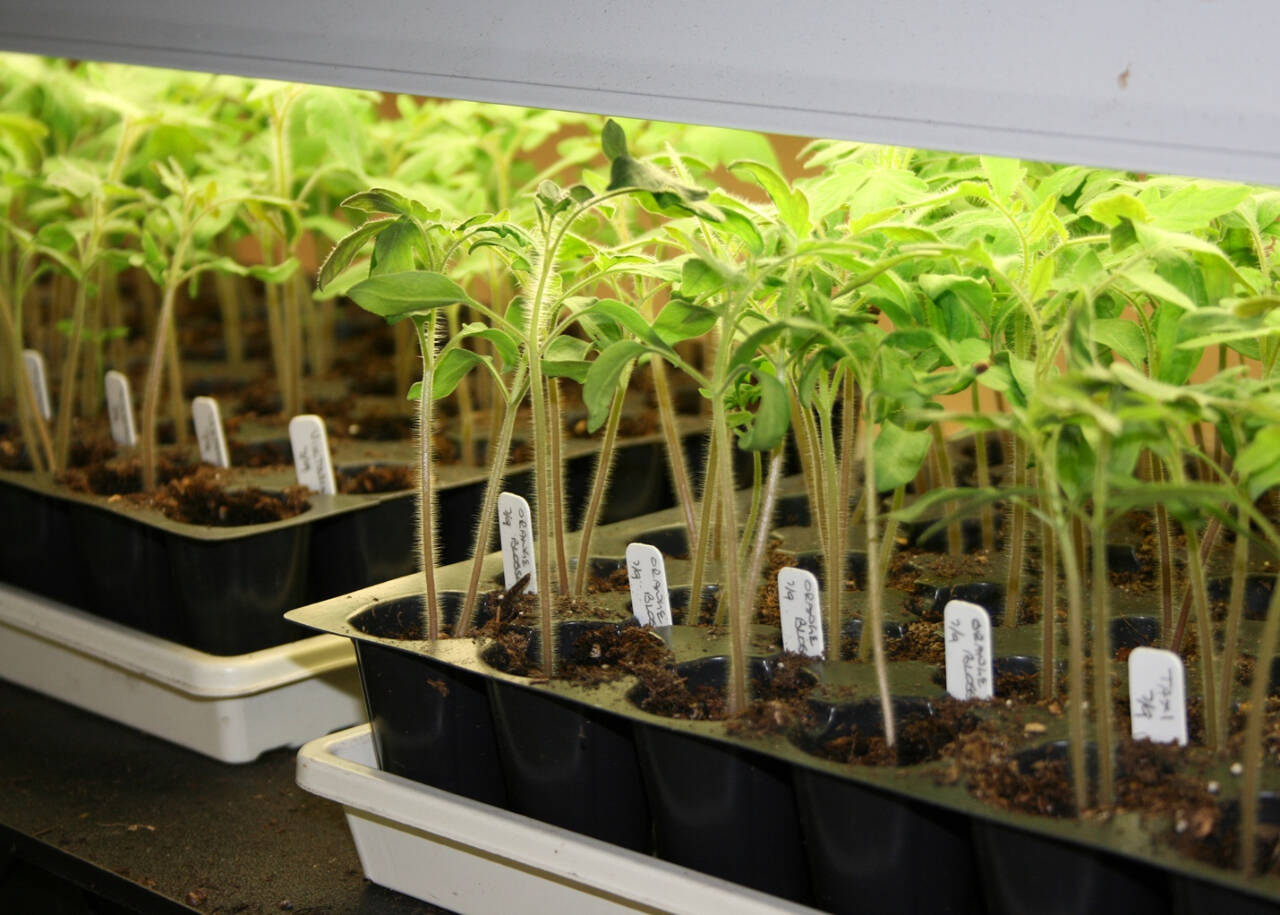Do you want to start plants from seeds indoors this year? You should! Sowing seeds indoors can gain precious weeks of growing time and save money instead of buying “starts” at the nursery.
Also, you can often grow a variety that is not sold locally, share your grown plants with others, and have fun!
Unfortunately, the natural light from a window is seldom enough for seedlings. Due to the climate and latitude of the Olympic Peninsula, natural light is not plentiful in late winter and early spring when many begin to start seeds. This usually causes seedlings to stretch as they lean towards the light. They will likely not grow into sturdy plants.
Artificial lighting is often a better option to produce healthy, stocky plants. Full-spectrum grow lights are a great option. They meet the needs throughout a plant’s entire life cycle. Unfortunately, the sticker price of full-spectrum grow lights may discourage you from starting plants from seeds.
Relatively inexpensive shop lights are a great alternative if you are only wanting to use them to start seeds indoors and then transplant seedlings outside.
Selecting shop lights for plants can seem very technical. Two key attributes to consider are brightness and color.
The brightness or intensity of a light is measured in lumens. Select lights for seedlings that are at least 2,000-3,000 lumens. Many shop lights are 5,000 lumens, which is great for plants.
In general, the brighter the light, the better it will be for your seedlings.
The color temperature of light is measured in kelvins (see chart).
Expensive grow lights contain the full spectrum of light.
Seedlings need the cooler, blue light waves for their stems and tender young leaves to thrive. Both full-spectrum grow lights and shop lights are well-suited for this early growth.
It is later in life when the plant sets flowers and grows fruits or vegetables that the red end of the spectrum is of greater need. That is where full-spectrum grow lights have the advantage; however, your seedlings will be outside by then getting the sun’s full-spectrum radiation.
Lighting options
Shop lights are available in both fluorescent and LED bulbs. Fluorescent lights are less expensive and easier to find. Although LED lights are more expensive to purchase, they use significantly less energy and can last several growing seasons.
Another option for shop lights that is becoming more and more popular is all-in-one compact LED fixtures. The bulbs are not replaceable in most applications; however, they have remarkable life spans of over 50,000 hours.
The bulbs of shop lights have a T rating, such as T5 or T8. T ratings simply indicate the diameter of the tube. A T5 tube’s diameter is 5/8-inch and a T8 is one-inch. Larger diameter tubes tend to be less expensive, however, they also tend to be less energy-efficient.
When purchasing replacement bulbs for shop light fixtures, be sure to select the correct T rating.
There are two variables to consider when providing light to seedlings; how many hours each day and how close the shop lights are to plants. The exact number of hours and distance depends on each particular situation.
Seedlings typically need 12-16 hours of shop light daily. A simple timer can be part of the set-up so lights are turned off and on automatically. Many plants need some dark period each night to develop properly.
Unlike full-spectrum grow lights, shop lights need to be close to the foliage to grow strong, sturdy seedlings. One strategy is to place shop lights about two to four inches above the top of the seedlings.
If the seedlings begin to look bleached out or burned, the light may be too close or they may be receiving light for too long. If the seedlings become leggy, try moving the light closer or leaving the lights on for a longer period of time.
There is no one-size-fits-all solution; some trial and error will probably be in order.
You can hang shop lights from an existing shelf or build your own inexpensive seed starting rack. Move the shop lights up as the plants grow by using a rope or chain to lift the lights.
Shop lights are an economical way to jump-start seeds indoors and extend the growing season.
Happy growing indoors!
Dave Eberle is a Clallam County Master Gardener.



